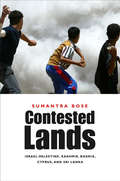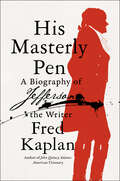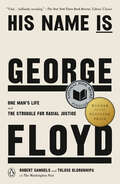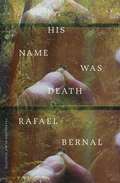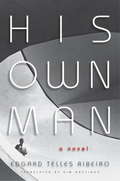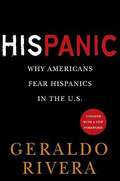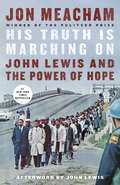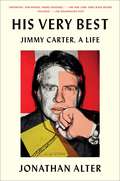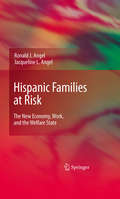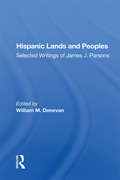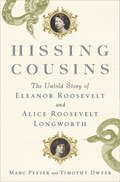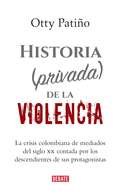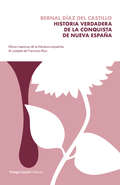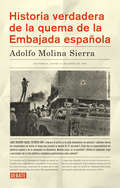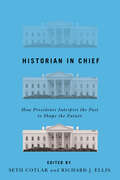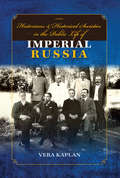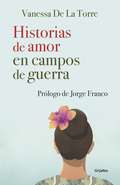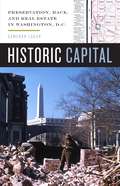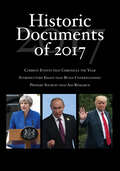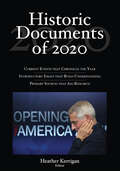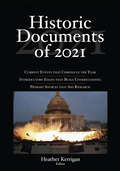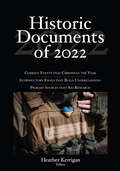- Table View
- List View
His Majesty’s Opponent: Subhas Chandra Bose and India's Struggle against Empire
by Sugata BoseThe man whom Indian nationalists perceived as the “George Washington of India” and who was President of the Indian National Congress in 1938–1939 is a legendary figure. Called Netaji (“leader”) by his countrymen, Subhas Chandra Bose struggled all his life to liberate his people from British rule and, in pursuit of that goal, raised and led the Indian National Army against Allied Forces during World War II. His patriotism, as Gandhi asserted, was second to none, but his actions aroused controversy in India and condemnation in the West. Now, in a definitive biography of the revered Indian nationalist, Sugata Bose deftly explores a charismatic personality whose public and private life encapsulated the contradictions of world history in the first half of the twentieth century. He brilliantly evokes Netaji’s formation in the intellectual milieu of Calcutta and Cambridge, probes his thoughts and relations during years of exile, and analyzes his ascent to the peak of nationalist politics. Amidst riveting accounts of imprisonment and travels, we glimpse the profundity of his struggle: to unite Hindu and Muslim, men and women, and diverse linguistic groups within a single independent Indian nation. Finally, an authoritative account of his untimely death in a plane crash will put to rest rumors about the fate of this “deathless hero.” This epic of a life larger than its legend is both intimate, based on family archives, and global in significance. His Majesty’s Opponent establishes Bose among the giants of Indian and world history.
His Masterly Pen: A Biography of Jefferson the Writer
by Fred KaplanAs he did for Abraham Lincoln and John Quincy Adams, award-winning biographer Fred Kaplan offers a fresh, illuminating look at the life of Thomas Jefferson and his contributions as a writer.In this unique biography, Fred Kaplan emphasizes Thomas Jefferson’s genius with language and his ability to use the power of words to inspire and shape a nation. A man renowned for many talents, writing was one of the major activities of the statemen’s life, though much of his best, most influential writing—with the exception of the letters he wrote up to his death, numbering approximately 100,000—was done by 1789, when Jefferson was just forty-six. All of his works—from his earliest correspondence; his essays and proclamations, including A Summary View of British America, The Declaration of Independence, and Notes on the State of Virginia; his religious and scientific writings; his inaugural addresses; his addresses to Indian nations; and his exchanges with Washington, Madison, Hamilton, John and Abigail Adams, and dear friends such as Maria Cosway—demonstrate his remarkable intelligence, prescient wisdom, and literary flair and reveal the man in all his complex and controversial brilliance.In His Masterly Pen, readers will find a new appreciation of Jefferson as a whole, of his strengths and weaknesses, and particularly of the degree to which his writing skills—which James Madison admired as “the shining traces of his pen”—are key to his personality and public career. Though Jefferson could wield his pen with unrivaled power, he was also a master of using words to both reveal and conceal from others and himself the complications, the inconsistencies, and the contradictions between his principles and his policies, between his head and his heart, and between his optimistic view of human nature and the realities of his personal situation and the world he lived in.
His Name Is George Floyd (Pulitzer Prize Winner): One Man's Life and the Struggle for Racial Justice
by Robert Samuels Toluse OlorunnipaFINALIST FOR THE NATIONAL BOOK AWARD AND LOS ANGELES TIMES BOOK PRIZE; SHORT-LISTED FOR THE J. ANTHONY LUKAS PRIZE; A BCALA 2023 HONOR NONFICTION AWARD WINNER. A landmark biography by two prizewinning Washington Post reporters that reveals how systemic racism shaped George Floyd's life and legacy—from his family&’s roots in the tobacco fields of North Carolina, to ongoing inequality in housing, education, health care, criminal justice, and policing—telling the story of how one man&’s tragic experience brought about a global movement for change.&“It is a testament to the power of His Name Is George Floyd that the book&’s most vital moments come not after Floyd&’s death, but in its intimate, unvarnished and scrupulous account of his life . . . Impressive.&” —New York Times Book Review (Editors' Choice)&“Since we know George Floyd&’s death with tragic clarity, we must know Floyd&’s America—and life—with tragic clarity. Essential for our times.&” —Ibram X. Kendi, author of How to Be an Antiracist &“A much-needed portrait of the life, times, and martyrdom of George Floyd, a chronicle of the racial awakening sparked by his brutal and untimely death, and an essential work of history I hope everyone will read.&” —Henry Louis Gates, Jr., author of The Black Church: This Is Our Story, This Is Our SongThe events of that day are now tragically familiar: on May 25, 2020, George Floyd became the latest Black person to die at the hands of the police, murdered outside of a Minneapolis convenience store by white officer Derek Chauvin. The video recording of his death set off a series of protests in the United States and around the world, awakening millions to the dire need for reimagining this country&’s broken systems of policing. But behind a face that would be graffitied onto countless murals, and a name that has become synonymous with civil rights, there is the reality of one man&’s stolen life: a life beset by suffocating systemic pressures that ultimately proved inescapable. This biography of George Floyd shows the athletic young boy raised in the projects of Houston&’s Third Ward who would become a father, a partner, a friend, and a man constantly in search of a better life. In retracing Floyd&’s story, Washington Post reporters Robert Samuels and Toluse Olorunnipa bring to light the determination Floyd carried as he faced the relentless struggle to survive as a Black man in America. Placing his narrative within the larger context of America&’s deeply troubled history of institutional racism, His Name Is George Floyd examines the Floyd family&’s roots in slavery and sharecropping, the segregation of his Houston schools, the overpolicing of his communities, the devastating snares of the prison system, and his attempts to break free from drug dependence—putting today's inequality into uniquely human terms. Drawing upon hundreds of interviews and extensive original reporting, Samuels and Olorunnipa offer a poignant and moving exploration of George Floyd&’s America, revealing how a man who simply wanted to breathe ended up touching the world.
His Name was Death
by Rafael BernalNever before in English, this legendary precursor to eco-fiction turns the coming insect apocalypse on its head A bitter drunk forsakes civilization and takes to the Mexican jungle, trapping animals, selling their pelts to buy liquor for colossal benders, and slowly rotting away in his fetid hut. His neighbors, a clan of the Lacodón tribe of Chiapas, however, see something more in him than he does himself (dubbing him Wise Owl): when he falls deathly ill, a shaman named Black Ant saves his life—and, almost by chance, in driving out his fever, she exorcises the demon of alcoholism as well. Slowly recovering, weak in his hammock, our antihero discovers a curious thing about the mosquitoes’ buzzing, “which to human ears seemed so irritating and pointless.” Perhaps, in fact, it constituted a language he might learn—and with the help of a flute and a homemade dictionary—even speak. Slowly, he masters Mosquil, with astonishing consequences… Will he harness the mosquitoes’ global might? And will his new powers enable him to take over the world that’s rejected him? A book far ahead of its time, His Name Was Death looks down the double-barreled shotgun of ecological disaster and colonial exploitation—and cackles a graveyard laugh.
His Own Man
by Edgard Telles Ribeiro Kim HastingsA charismatic young diplomat in Brazil's Foreign Ministry, Marcilio Andrade Xavier (Max to his friends and colleagues) renounces his past ideals and becomes an informer after the military coup of 1964. While his colleagues attempt to reconcile themselves to the new realities of a dictatorship, Max begins to navigate the shadowy world of deception. During the ensuing "Dirty War," his government begins preying on its own citizens, and those who resist end up being tortured, killed, or simply "disappeared." Meanwhile, with virtuosic finesse, Max advances swiftly up the diplomatic ladder, somehow evading implication in any darker deeds. His artful maneuvering -- both personal and political -- astonishes his friends and assures him a meteoric career during the military regime. Ironically, once democracy is eventually restored after more than two decades, the enigmatic Max will still manage to thrive. But his singular career is achieved at a dire personal cost, for his relations with family and friends become irrevocably poisoned.Set against the backdrop of ruthless embassy machinations, glittering parties, covert spy activities, and revealing intimate encounters, HIS OWN MAN offers an extraordinary and seductive protagonist, as well as a chilling anatomy of ambition, power, and betrayal.
His Panic
by Geraldo RiveraAn account of the Hispanic population's growth and the changing face of America from world-renowned journalist Geraldo Rivera-now updated with a new Foreword. Since his infamous confrontation with Bill O'Reilly on The O'Reilly Factor, Emmy® award winner Geraldo Rivera has examined what makes the issue of illegal Hispanic immigration so complex. With widespread fury and frustration directed at Hispanics, the nation's largest minority, this may be the single most divisive issue in America today- with some citizens blaming illegal immigrants for everything from terrorism to the spread of disease and the loss of jobs. With unbiased analysis, Rivera exposes the hypocrisy, racism, and ignorance behind anti-immigration sentiments, from both extremists and otherwise ordinary Americans. An unflinching look at one of today's biggest issues- and a vital contribution to the ongoing debate-His Panic is destined to reshape the way Americans view the future of this country.
His Truth Is Marching On: John Lewis and the Power of Hope
by Jon MeachamAn intimate and revealing portrait of civil rights icon and longtime U.S. congressman John Lewis, linking his life to the painful quest for justice in America from the 1950s to the present—from the Pulitzer Prize–winning author of The Soul of America <P><P>John Lewis, who at age twenty-five marched in Selma, Alabama, and was beaten on the Edmund Pettus Bridge, was a visionary and a man of faith. Drawing on decades of wide-ranging interviews with Lewis, Jon Meacham writes of how this great-grandson of a slave and son of an Alabama tenant farmer was inspired by the Bible and his teachers in nonviolence, Reverend James Lawson and Martin Luther King, Jr., to put his life on the line in the service of what Abraham Lincoln called “the better angels of our nature.” <P><P>From an early age, Lewis learned that nonviolence was not only a tactic but a philosophy, a biblical imperative, and a transforming reality. At the age of four, Lewis, ambitious to become a minister, practiced by preaching to his family’s chickens. When his mother cooked one of the chickens, the boy refused to eat it—his first act, he wryly recalled, of nonviolent protest. Integral to Lewis’s commitment to bettering the nation was his faith in humanity and in God—and an unshakable belief in the power of hope. <P><P>Meacham calls Lewis “as important to the founding of a modern and multiethnic twentieth- and twenty-first-century America as Thomas Jefferson and James Madison and Samuel Adams were to the initial creation of the Republic itself in the eighteenth century.” A believer in the injunction that one should love one's neighbor as oneself, Lewis was arguably a saint in our time, risking limb and life to bear witness for the powerless in the face of the powerful. In many ways he brought a still-evolving nation closer to realizing its ideals, and his story offers inspiration and illumination for Americans today who are working for social and political change. <P><P><b>A New York Times Bestseller</b>
His Very Best: Jimmy Carter, a Life
by Jonathan AlterFrom one of America&’s most-respected journalists and modern historians comes the first full-length biography of Jimmy Carter, the thirty-ninth president of the United States and Nobel Prize–winning humanitarian. Jonathan Alter tells the epic story of an enigmatic man of faith and his improbable journey from barefoot boy to global icon. Alter paints an intimate and surprising portrait of the only president since Thomas Jefferson who can fairly be called a Renaissance Man, a complex figure—ridiculed and later revered—with a piercing intelligence, prickly intensity, and biting wit beneath the patented smile. Here is a moral exemplar for our times, a flawed but underrated president of decency and vision who was committed to telling the truth to the American people. Growing up in one of the meanest counties in the Jim Crow South, Carter is the only American president who essentially lived in three centuries: his early life on the farm in the 1920s without electricity or running water might as well have been in the nineteenth; his presidency put him at the center of major events in the twentieth; and his efforts on conflict resolution and global health set him on the cutting edge of the challenges of the twenty-first. Drawing on fresh archival material and five years of extensive access to Carter and his entire family, Alter traces how he evolved from a timid, bookish child—raised mostly by a black woman farmhand—into an ambitious naval nuclear engineer writing passionate, never-before-published love letters from sea to his wife and full partner, Rosalynn; a peanut farmer and civic leader whose guilt over staying silent during the civil rights movement and not confronting the white terrorism around him helped power his quest for racial justice at home and abroad; an obscure, born-again governor whose brilliant 1976 campaign demolished the racist wing of the Democratic Party and took him from zero percent to the presidency; a stubborn outsider who failed politically amid the bad economy of the 1970s and the seizure of American hostages in Iran but succeeded in engineering peace between Israel and Egypt, amassing a historic environmental record, moving the government from tokenism to diversity, setting a new global standard for human rights, and normalizing relations with China among other unheralded and far-sighted achievements. After leaving office, Carter eradicated diseases, built houses for the poor, and taught Sunday school into his mid-nineties. This engrossing, monumental biography will change our understanding of perhaps the most misunderstood president in American history.
Hispanic Families at Risk
by Ronald J. Angel Jacqueline L. AngelIn the United States, work is the key to economic success, as well as the major source of health care coverage and retirement security. While Europeans look to the State for these benefits, Americans for the most part do not. This system of employment-based benefits means that those disadvantaged in the labor market are also disadvantaged in terms of health care coverage and retirement security. The authors of this work examine the overrepresentation of Mexican Americans in low wage or service sector jobs, which rarely come with health insurance or retirement coverage. At all ages, Mexican Americans have lower rates of health insurance and retirement coverage than do other minority groups, such as African Americans or other Hispanic groups. Although employment in jobs that do not provide benefits is one major source of this disparity, other factors--including immigration history, citizenship status, and language proficiency--further block opportunities for upward mobility within the Mexican American population. In their analysis, the authors work to deemphasize the popular, cultural explanation for the economic disparities and focus on more practical, policy-based solutions. In each chapter, the authors identify and critique the factors that affect the economic security and health care access of individuals throughout the life course, suggesting policies for reform. This work will be of interest to anyone working in the fields of cultural studies, public health and the sociology of work. With the focus on real world causes for the problems as well as potential solutions, policy-makers will also find this informative book an essential resource.
Hispanic Lands And Peoples: Selected Writings Of James J. Parsons
by William M. DenevanThis anthology focuses on James J. Parsons' work in Latin America and in Spain, with the resulting neglect of his publications on other regions, particularly California. It includes the integration of economy and ecology. .
Hispanics and the U.S. Political System: Moving Into the Mainstream
by Chris Garcia Gabriel SanchezAs the Hispanic population in the U.S. grows, so too does its influence. The general election in 2000 marked an era of increased influence and awareness by Hispanics in politics both as voters and politicians. While it is clear that Latinos are influencing and changing politics, the impact on politics in the U.S. is still not clear. Authored by leading scholar, F. Chris Garcia and Gabriel Sanchez, Hispanics and the U.S. Political System : Moving into the Mainstream focuses on the historical, contemporary and future role of Hispanics in the United States.
Hissing Cousins
by Timothy Dwyer Marc PeyserA lively and provocative double biography of first cousins Eleanor Roosevelt and Alice Roosevelt Longworth, two extraordinary women whose tangled lives provide a sweeping look at the twentieth century. When Theodore Roosevelt became president in 1901, his beautiful and flamboyant daughter was transformed into "Princess Alice," arguably the century's first global celebrity. Thirty-two years later, her first cousin Eleanor moved into the White House as First Lady. Born eight months and twenty blocks apart from each other in New York City, Eleanor and Alice spent a large part of their childhoods together and were far more alike than most historians acknowledge. But their politics and temperaments couldn't have been more distinct. Do-gooder Eleanor was committed to social justice but hated the limelight; acid-tongued Alice, who became the wife of philandering Republican congressman Nicholas Longworth, was an opponent of big government who gained notoriety for her cutting remarks (she famously quipped that dour President Coolidge "looked like he was weaned on a pickle"). While Eleanor revolutionized the role of First Lady with her outspoken passion for human rights, Alice made the most of her insider connections to influence politics, including doing as much to defeat the League of Nations as anyone in elective office.The cousins themselves liked to play up their oil-and-water relationship. "When I think of Frank and Eleanor in the White House I could grind my teeth to powder and blow them out my nose," Alice once said. In the 1930s they even wrote opposing syndicated newspaper columns and embarked on competing nationwide speaking tours. Blood may be thicker than water, but when the family business is politics, winning trumps everything.Vivid, intimate, and stylishly written, Hissing Cousins finally sets this relationship center stage, revealing the contentious bond between two political trailblazers who short-circuited the rules of gender and power, each in her own way.
Historia (privada) de la violencia: La crisis colombiana de mediados del siglo XX contada por los descendientes de sus protagonistas
by Otty PatiñoA partir de 28 entrevistas a familiares de personajes claves de la historia de mediados del siglo XX, se reconstruye una huella, una herencia, que trasciende al país en conjunto, y que ha sido transmisora de afectos, frustraciones, prejuicios y temores que están en la base de la formación política. Este no es un libro de historia convencional. Acude a la subjetividad, a los recuerdos vivos para contar ocho años de la historia colombiana donde colapsaron tres importantes proyectos nacionales (1945-1953), que generaron pasiones políticas entre los colombianos y que sirvieron de justificación de la violencia que todavía padecemos. Es un enfoque innovador que reflexiona sobre las ideas infundadas en las muchas veces hostil historia de Colombia. "El mayor esfuerzo investigativo estuvo centrado en la parte subjetiva, en la huella que dejaron estos acontecimientos en el intelecto y el corazón de quienes, por razones de parentesco, recibieron más de cerca la herencia de las ideas, los sueños, las frustraciones, losamores y los odios de los principales protagonistas de estas historias. Esa huella trascendió también a muchos colombianos que recibimos querencias y malquerencias, frustraciones, prejuicios y temores que están en la base de nuestra formación política". Otty Patiño
Historia verdadera de la conquista de la Nueva España: Verdadera Historia De Los Sucesos De La Conquista De La Nueva Espa�a, Por El Capit�n Bernal D�az Del Castillo, Uno De Sus Conquistadores
by Bernal Diaz Del Castillo Francisco RicoEl descubrimiento y conquista de América fueron acontecimientos cruciales de incalculables consecuencias, aun hoy en vías de resolución. La Historia de la conquista de Nueva España es una crónica portentosa y minuciosa de un testigo directo de aquella empresa descomunal. El brío excepcional del relato, el vigor de la prosa y su infatigable capacidad para evocar hombres, acciones y escenarios le conceden, sin lugar a dudas, un sitio de privilegio en la literatura española. El libro contiene tres grandes bloques temáticos: el descubrimiento de Yucatán por las expediciones de Francisco Hernández de Córdoba y Juan de Grijalva (1517-18); la epopeya propiamente dicha bajo los estandartes de Hernán Cortes (1519-21); y el viaje a Honduras, complementado con una extensa miscelánea de noticias sobre la Nueva España. Cada página es un dechado de prodigiosa intensidad, producto del talento narrativo de Bernal Diaz, de la energía de su estilo y del terrible verismo con que narra la aventura. Nada queda fuera de su crónica en esta edición concentrada en sus mejores capítulos, que se incluyen por entero: ni las vicisitudes y sucesos militares, ni la caracterización de los personajes más relevantes (Cortes, Moctezuma, etc.), ni los sentimientos y experiencias personales de un soldado empeñado en dar exacta y precisa cuenta de los avatares vividos en esa tierra desconocida. Pero quizás la grandeza de esta obra radique en el aliento épico que la anima. A diferencia de otros cronistas, a los que se enfrenta y critica, Bernal Diaz presenta la conquista de México como una empresa común, como la gesta de un colectivo de hombres cuyos aciertos y errores corresponden al pueblo español.
Historia verdadera de la quema de la Embajada española
by Gustavo Adolfo Molina SierraLo sucedido en la Embajada de España no puede ser tomado como una coincidencia o casualidad. Por el contrario, todo se integra como parte de un plan, eso sí, mal ejecutado, que al salirse de control falló aparatosamente y causó una tragedia. Aun así se trató de sacar provecho de esta desgracia. Estos intentos mantuvieron el caso activo, pero no existió la voluntad política para investigarlo judicialmente hasta el 2014. Guatemala, jueves 31 de enero de 1980. ¿Qué sucedió en aquel fatídico día? ¿Ingresó la policía a la sede diplomática sin permiso? ¿Quienes fueron los responsables de iniciar el fuego que provocó la muerte de 37 personas? ¿Cuál fue la responsalibidad del gobierno español y de su embajador en Guatemala, Máximo Cajal, en lo sucedido? ¿Utilizó el embajador Cajal a personas de la vida política y académica guatemalteca como señuelo? ________________________________________________________________ A lo largo de 40 años, desde aquella lejana fecha del jueves 31 de enero de 1980, Adolfo Sierra Molina ha recopilado cuanta información se ha publicado relacionada con la ocupación y quema de la Embajada de España. Se convirtió también en una de las voces que desde el inicio expuso, a través de numerosos artículos y dando su testimonio una y otra vez, la versión de hechos de los que él fue testigo y que ha ido completando con las pruebas de personas que estuvieron presentes. Su padre, Adolfo Molina Orantes, un destacado abogado, académico, humanista y exfuncionario, murió tragicamente junto a otras 36 personas, entre las que se encontraban Eduardo Cáceres Lehnhoff, funcionarios españoles, personal guatemalteco, así como los que tomaron la sede diplomática desde las primeras horas de la mañana. Uno de los invasores fue encontrado con vida por los bomberos cuando ingresaron al despacho del embajador Máximo Cajal López, quien, minutos antes, había salido caminando de la habitación en la que se habían atrincherado. Adolfo Molina Sierra revela y analiza lo sucedido poniendo los puntos sobre las ies y señalando sin tapujos a los responsables en una historia que no es solo suya, sino también de Guatemala.
Historian in Chief: How Presidents Interpret the Past to Shape the Future
by Rick Perlstein John Milton Cooper Jr. Kathleen Dalton James T. Kloppenberg Jeffrey L. Pasley David Waldstreicher David Sehat Jonathan Earle Edward Countryman Charlie Laderman Elvin T. LimPresidents shape not only the course of history but also how Americans remember and retell that history. From the Oval Office they instruct us what to respect and what to reject in our past. They regale us with stories about who we are as a people, and tell us whom in the pantheon of greats we should revere and whom we should revile. The president of the United States, in short, is not just the nation’s chief legislator, the head of a political party, or the commander in chief of the armed forces, but also, crucially, the nation’s historian in chief.In this engaging and insightful volume, Seth Cotlar and Richard Ellis bring together top historians and political scientists to explore how eleven American presidents deployed their power to shape the nation’s collective memory and its political future. Contending that the nation’s historians in chief should be evaluated not only on the basis of how effective they are in persuading others, Historian in Chief argues they should also be judged on the veracity of the history they tell.
Historians and Historical Societies in the Public Life of Imperial Russia
by Vera KaplanWhat was the role of historians and historical societies in the public life of imperial Russia? Focusing on the Society of Zealots of Russian Historical Education (1895–1918), Vera Kaplan analyzes the network of voluntary associations that existed in imperial Russia, showing how they interacted with state, public, and private bodies. Unlike most Russian voluntary associations of the late imperial period, the Zealots were conservative in their view of the world. Yet, like other history associations, the group conceived their educational mission broadly, engaging academic and amateur historians, supporting free public libraries, and widely disseminating the historical narrative embraced by the Society through periodicals. The Zealots were champions of voluntary association and admitted members without regard to social status, occupation, or gender. Kaplan’s study affirms the existence of a more substantial civil society in late imperial Russia and one that could endorse a modernist program without an oppositional liberal agenda.
Historias de amor en campos de guerra
by Vanessa De La TorreEste libro reúne cinco historias que se entrelazan de mujeres que comparten un denominador común: la guerra. Vanessa De La Torre, una de las periodistas más destacadas del panorama actual, inició hace unos años una investigación que resultó en este libro. Historias de amor en campos de guerra reúne los testimonios de seis mujeres extraordinarias que por diversas razones terminaron siendo víctimas de un conflicto armado del que pensaron que nunca podrían librarse, y que, en medio de ese drama, vivieron intensas y memorables aventuras amorosas. De La Torre cuenta, por ejemplo, detalles de la vida de una mujer desplazada antes de llegar a convertirse en una de las cantantes de música popular más exitosas de los últimos tiempos; narra la apasionante aventura que vivió una joven junto al excomandante del M-19 Carlos Pizarro, y recrea los obstáculos que tuvo que enfrentar una exguerrillera que huyó del monte para seguir su corazón. En definitiva, todos los relatos aquí plasmados se entrelazan y, al tiempo que revelan un pasado marcado por la violencia, siembran la sensación de alivio y esperanza que dejan las verdaderas historias de amor. "Desde los más reconocidos protagonistas de nuestra barbarie hasta los más anónimos, el amor ha cruzado por la vida de estos personajes para dotarlos de una humanidad que parecía haber sido devorada por la violencia". Jorge Franco
Historic Capital: Preservation, Race, and Real Estate in Washington, D.C.
by Cameron LoganWashington, D.C. has long been known as a frustrating and sometimes confusing city for its residents to call home. The monumental core of federal office buildings, museums, and the National Mall dominates the city&’s surrounding neighborhoods and urban fabric. For much of the postwar era, Washingtonians battled to make the city their own, fighting the federal government over the basic question of home rule, the right of the city&’s residents to govern their local affairs. In Historic Capital, urban historian Cameron Logan examines how the historic preservation movement played an integral role in Washingtonians&’ claiming the city as their own. Going back to the earliest days of the local historic preservation movement in the 1920s, Logan shows how Washington, D.C.&’s historic buildings and neighborhoods have been a site of contestation between local interests and the expansion of the federal government&’s footprint. He carefully analyzes the long history of fights over the right to name and define historic districts in Georgetown, Dupont Circle, and Capitol Hill and documents a series of high-profile conflicts surrounding the fate of Lafayette Square, Rhodes Tavern, and Capitol Park, SW before discussing D.C. today.Diving deep into the racial fault lines of D.C., Historic Capital also explores how the historic preservation movement affected poor and African American residents in Anacostia and the U Street and Shaw neighborhoods and changed the social and cultural fabric of the nation&’s capital. Broadening his inquiry to the United States as a whole, Logan ultimately makes the provocative and compelling case that historic preservation has had as great an impact on the physical fabric of U.S. cities as any other private or public sector initiative in the twentieth century.
Historic Documents of 2017
by Heather KerriganFor more than 45 years, the Historic Documents series has made primary source research easy by presenting excerpts from documents on the important events of each year for the United States and the world. Each volume includes approximately 60 events with well over 100 documents from the previous year, from official or other influential reports and surveys, to speeches from leaders and opinion makers, to court cases, legislation, testimony, and much more. Historic Documents is renowned for the well-written and informative background, history, and context it provides for each document. Each volume begins with an insightful essay that sets the year’s events in context, and each document or group of documents is preceded by a comprehensive introduction that provides background information on the event. Full-source citations are provided. Readers have easy access to material through a detailed, thematic table of contents, and each event includes references to related coverage and documents from the last ten editions of the series. Events covered in the 2017 Edition include: The intricacies of the new presidential administration of Donald Trump Russian involvement in the U.S. presidential election U.S. and global policies on immigration and refugees Landmark Supreme Court rulings on gerrymandering and state grant money for parochial schools, and the appointment of Neil Gorsuch Global warming and climate change agreements and policies European elections, including those in the UK, France, and Germany Outcomes of the G-20 Summit North Korea and international calls to action Volumes in this series dating back to 1972 are available as online editions on SAGE Knowledge.
Historic Documents of 2020 (Historic Documents)
by Heather KerriganPublished annually since 1972, the Historic Documents series has made primary source research easy by presenting excerpts from documents on the important events of each year for the United States and the World. Each volume pairs 60 to 70 original background narratives with well over 100 documents to chronicle the major events of the year, from official reports and surveys to speeches from leaders and opinion makers, to court cases, legislation, testimony, and much more. Historic Documents is renowned for the well-written and informative background, history, and context it provides for each document. Organized chronologically, each volume covers the same wide range of topics: business, the economy and labor; energy, environment, science, technology, and transportation; government and politics; health and social services; international affairs; national security and terrorism; and rights and justice. Each volume begins with an insightful essay that sets the year’s events in context, and each document or group of documents is preceded by a comprehensive introduction that provides background information on the event. Full-source citations are provided. Readers have easy access to material through a detailed, thematic table of contents, and each event includes references to related coverage and documents from the last ten editions of the series.
Historic Documents of 2020 (Historic Documents)
by Heather KerriganPublished annually since 1972, the Historic Documents series has made primary source research easy by presenting excerpts from documents on the important events of each year for the United States and the World. Each volume pairs 60 to 70 original background narratives with well over 100 documents to chronicle the major events of the year, from official reports and surveys to speeches from leaders and opinion makers, to court cases, legislation, testimony, and much more. Historic Documents is renowned for the well-written and informative background, history, and context it provides for each document. Organized chronologically, each volume covers the same wide range of topics: business, the economy and labor; energy, environment, science, technology, and transportation; government and politics; health and social services; international affairs; national security and terrorism; and rights and justice. Each volume begins with an insightful essay that sets the year’s events in context, and each document or group of documents is preceded by a comprehensive introduction that provides background information on the event. Full-source citations are provided. Readers have easy access to material through a detailed, thematic table of contents, and each event includes references to related coverage and documents from the last ten editions of the series.
Historic Documents of 2021 (Historic Documents)
by Heather Kerrigan River Horse Communications, LLCThe Historic Documents of 2021 makes primary source research easy by presenting excerpts from documents on the important events of the United States and the World. The Historic Documents of 2021 pairs 60 to 70 original background narratives with well over 100 documents to chronicle the major events of the year, from official reports and surveys to speeches from leaders and opinion makers, to court cases, legislation, testimony, and much more. Historic Documents is renowned for the well-written and informative background, history, and context it provides for each document. Organized chronologically, it covers the same wide range of topics: business, the economy and labor; energy, environment, science, technology, and transportation; government and politics; health and social services; international affairs; national security and terrorism; and rights and justice.
Historic Documents of 2021 (Historic Documents)
by Heather Kerrigan River Horse Communications, LLCThe Historic Documents of 2021 makes primary source research easy by presenting excerpts from documents on the important events of the United States and the World. The Historic Documents of 2021 pairs 60 to 70 original background narratives with well over 100 documents to chronicle the major events of the year, from official reports and surveys to speeches from leaders and opinion makers, to court cases, legislation, testimony, and much more. Historic Documents is renowned for the well-written and informative background, history, and context it provides for each document. Organized chronologically, it covers the same wide range of topics: business, the economy and labor; energy, environment, science, technology, and transportation; government and politics; health and social services; international affairs; national security and terrorism; and rights and justice.
Historic Documents of 2022 (Historic Documents)
by Heather Kerrigan River Horse Communications, LLCPublished annually since 1972, the Historic Documents series has made primary source research easy by presenting excerpts from documents on the important events of each year for the United States and the World. Each volume pairs 60 to 70 original background narratives with well over 100 documents to chronicle the major events of the year, from official reports and surveys to speeches from leaders and opinion makers, to court cases, legislation, testimony, and much more.
